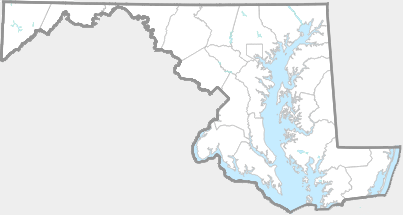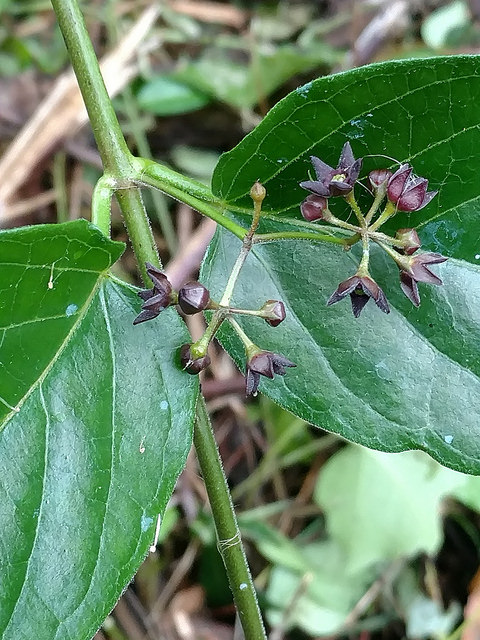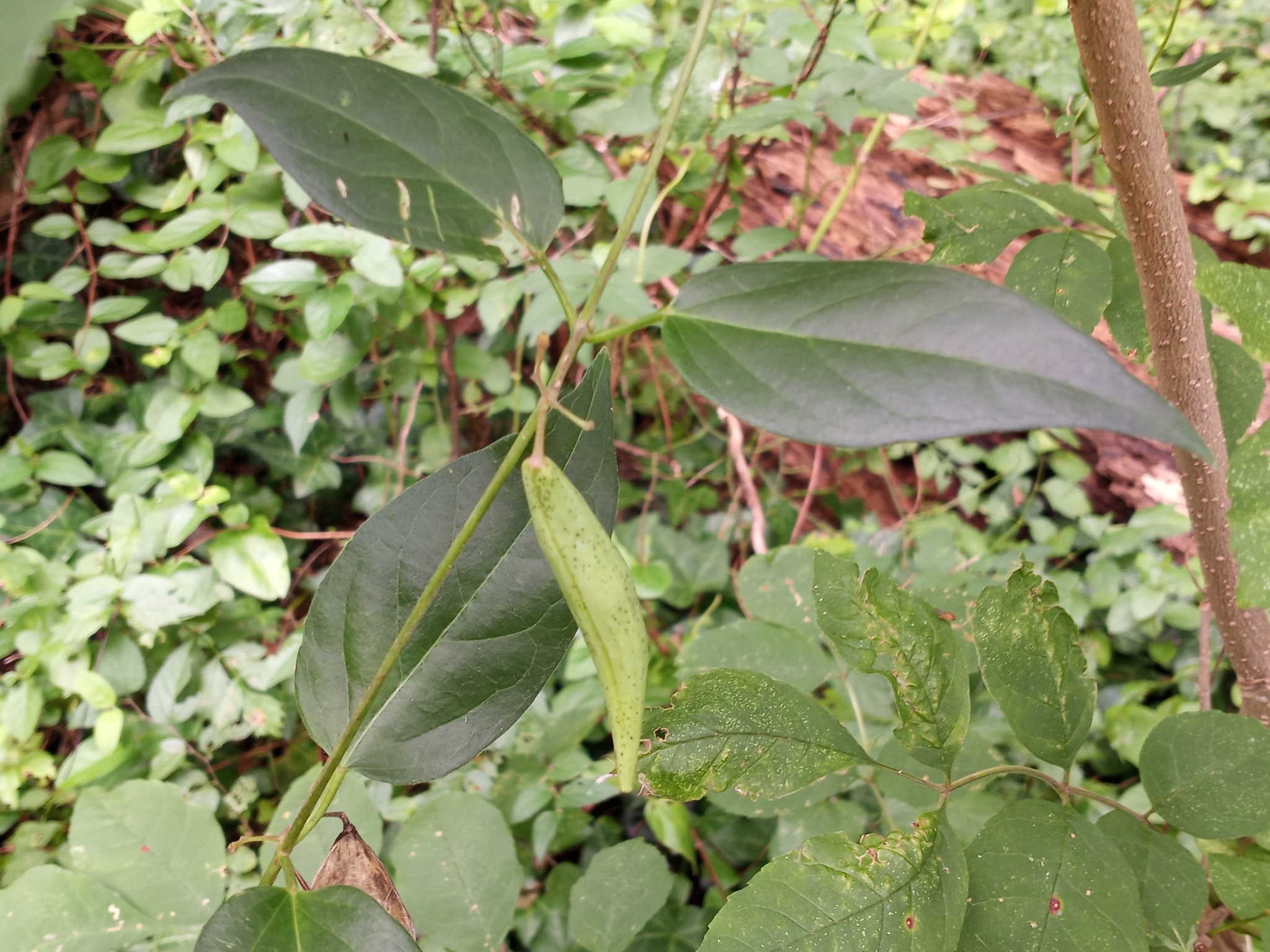

 Synonyms: Cynanchum louiseae, Cynanchum nigrum.
Synonyms: Cynanchum louiseae, Cynanchum nigrum.



Black Swallow-wort is a rare non-native milkweed that has the potential to become an invasive species in Maryland. Black Swallow-wort is native to southwestern Europe and was originally introduced to the United States in the 1800s. According to an article published in the Boston Globe, "It all started in the mid-1800s [1854, to be exact] when the black swallow-wort, a perennial, herbaceous vine native to southern Europe, was first cultivated in greenhouses in Ipswich and at the Harvard Botanical Garden in Cambridge. When, a short time later, the vine was discovered growing wild in Cambridge, it was assumed it had escaped from the Harvard greenhouse." Since then Black Swallow-wort has invaded most of New England and many of the Great Lake states. Maryland is at the southern edge of its non-native range in the United States. The Minnesota Natural Resources Conservation Service writes, "Black swallow-wort spreads long distances by seed and rhizomes. Thick infestations in full sun can produce 2,000 seeds per square meter. One seed produces one to four embryos, which greatly increases the likelihood of seed survival and establishment. Rhizomes can form extensive patches in clumps of several to many stems that crowd out the native vegetation. Stands can eventually cover several acres of land."
Most sources state that Black Swallow-wort is a plant of upland habitats but a population found in Talbot County is growing only a few yards away from a brackish tidal creek!
Black Swallow-wort can be confused with a few of our rare native milkweed vines like Maroon Carolina Milkvine (Matelea carolinensis) and Climbing Milkvine (Matelea obliqua). To differentiate between Black Swallow-wort and our native species of Matelea, first look at the flowers. The flowers are typically the same color, a rich purplish brown, but the flower size is very different. Our native Mateleas have much larger flowers than Black Swallow-wort. The petals of Black Swallow-wort range from 1.5 mm to 4.5 mm long while the petals of our native Mateleas range from 6 mm to 18 mm (Weakley, 2015). The leaves of the two genera are also different. The leaves of Black Swallow-wort are smaller and more lanceolate than the larger, broader and more rounded leaves of our native Matelea species.
When not in flower Black Swallow-wort may also be confused with Honey Vine (Cynanchum laeve) another species of vining milkweed native to Maryland. Honey Vine has white flowers which makes identification easy but if flowers are lacking you need to look at the base of the leaves. The leaves of Honey Vine have extreme cordate bases which the leaves of Black Swallow-wort lack.
Unfortunately, Black Swallow-wort can also cause harm to Monarch butterflies. According to the Monarch Joint Venture web site, "Studies have shown that female monarchs will lay eggs on black swallow-wort, even when it is growing in the same field as common milkweed (Casagrande and Dacey 2007). Laboratory tests show that monarch caterpillars cannot feed on black or pale swallow-wort plants. Thus, swallow-worts may act as a 'sink' for monarchs; caterpillars from eggs laid on these invasive plants will not survive, and are essentially wasted." The Casagrande and Dacey paper states that in some cases over 20% of the Monarchs being monitored in a semi-controlled environment decided to lay their eggs on Black Swallow-wort instead of Common Milkweed! In their paper published in the journal Environmental Entomolgy, 2007, the authors state in their conclusion, "It is clear that, at least in southern Rhode Island, monarch butterflies oviposit on Vincetoxicum species, and they lay a higher proportion of eggs on these dead-end hosts when [Common Milkweed] plants are relatively rare. To date, there is no evidence that monarchs are evolving an ability to survive on these exotic plants. Rather, Vincetoxicum species seem to be functioning as evolutionary traps (Schlapfer et al. 2005). Because no larvae survived from eggs laid on Vincetoxicum, there should be selection pressure against those adults making this oviposition 'mistake.' However, after over a century of exposure to these exotic plants, this behavior persists. This behavioral trait may be related to the fact that [Honey Vine] serves as an important host for monarch butterflies in parts of the southeastern United States (Yeargan and Allard 2005). Vincetoxicum and Cynanchum are closely related genera, possibly sharing ovipositional stimulants for monarch butterflies. Successful reproduction on C. laeve may offset selective effects of oviposition on Vincetoxicum species."
There are 8 records in the project database.
| GA | AL | WA | FR | CL | MO | HO | BA | BC | HA | CE | PG | AA | CV | CH | SM | KE | QA | CN | TA | DO | WI | SO | WO |





